The SRT series cameras, well known for their solid construction, are fitted with a double-hinged reflex mirror and have extremely bright viewfinders.
Exposure metering is a match needle system where the aperture needle is lined up with the shutter speed setting for the correct exposure.
Depending on the camera variant, the viewfinder may also display the lens aperture setting through a small window on top of the viewfinder frame, the shutter speed scale on the bottom of the viewfinder screen, whilst all will have the match needle exposure display vertically on the right of the screen.
While the SRT series cameras stayed in production for 15 years (till 1981), the general model SRT-101 was replaced by the SRT-201/101b/SR101 in 1976 and again by another variant of SRT-210/101b/SR101s in 1978.
Minolta SRT-101 Complete Walkthrough
Here's a video tour of my 1967 Minolta SRT-101. I bought this camera off eBay a few months ago, and after running 4 rolls through it, I've seen that it takes amazing pictures.
Minolta SRT-101b
The Minolta SRT 101b, a later variant of the SRT 101, was first released in 1976 and stayed in production till the end of the SRT line. The model was also marketed as the SRT-201 and SR101S in various parts of the world.
One notable change, towards the end of the SR-T 101 production run, was the removal of the mirror lock-up feature and the replacement of the flash support with a hot shoe. The shutter speed range is constant from B to 1/1000 second, with film ISO speed setting from 6 to 6400, the viewfinder displaying only the shutter speed scale at the bottom of the screen, and the exposure metering needle set up on the right vertical.
Basic Camera Features
What is unique to the SRT line is the CLC (Contrast Light Compensator) metering system. The system uses a pair of Cadmium Sulfide photocells, located one each at the top and bottom of the picture frame, with the lower cell being twice as sensitive. This system compensates for the higher reading of sky areas and gives the image a better overall exposure.
Similar to other models of the SRT line, or even when compared to cameras of other makes, the front plane of the SRT-101b body is rather spartan, with the lens housing mount being the major portion. The self-timer lever and switch mechanism are located to the left of the housing, and towards the lower part of the housing, the stop-down lever.
I think it is worth mentioning that the stop-down lever works only after the shutter has been primed (cocked). One press and the stop-down mechanism is activated, released either by way of releasing the shutter or giving the lever another press.
To the left of the top plane is the rewind crank which is coupled to the pull-up film back release, a hot-shoe on top of the pentaprism housing, and to the right, the shutter speed dial which is integrated with the pull-up and turn ISO film speed selector, the shutter release button sharing the same axis as the film forward crank, and the film frame window towards the right edge of the top plane.
The backplane of the SRT-101b is another plane affair with the hinged film back occupying the whole width of the camera body below the top plane housing, which is occupied by only the viewfinder window. A memo holder with an ASA/DIN conversion table is located centrally on the film back.
On the bottom plate is the film rewind release button, the camera battery chamber with a normally knurled type cover, the tripod socket, and the On/Off/Battery Check switch, again operated by pressing your thumb and knurling the switch you want to set the setting to.
The film box is a standard configuration as seen on most SLR film cameras of that era, with the film canister chamber on the left end of the body, followed by the shutter window, sprocket gear, and the take-up spool on the opposite end of the film box.
Film Loading and Rewinding
Film loading on the Minolta SRT-101b is the standard manual procedure of opening the film back, placing the film canister into the canister chamber, pulling the film tab across, and the film is properly tensioned over the shutter window and sprocket gear arrangement, and inserting the film tab end into one of the tabs of the take-up spool before closing the film back. The film winds the emulsion side up.
Once the film back is closed, do the two blank shots sequence to bring the unexposed part of the film properly to Frame 1, and you are off and ready to go.
To rewind, press the film rewind release button located on the bottom plane of the camera, flip the rewind crank out, and crank in the clockwise direction until the film is completely wound back into its canister before taking the canister out and sending it for processing.
Viewfinder Readout
The viewfinder in the SRT-101b is a Matt-Fresnel-Field focusing screen with a centered 3mm microprism spot focusing aid, with the aforementioned shutter speed scale on the lower part of the screen, and the match needle pointers on the right vertical of the viewfinder frame.
The straight needle is the aperture opening that corresponds to the aperture setting on the lens, while the balloon end is the shutter speed indicator. Aligning the two needles together can be done either by shutter or aperture priority exposure measurement.
The two pyramid shapes flanking the needle movement indicate the limit of the exposure reading, and the square box is the needle rest point, showing sufficient battery power is available when doing a BC (Battery Check).
Metering Methods
Unless otherwise, you are using non-MC (Meter Coupled) or the later version MD lenses, metering is always done at the full aperture by the TTL metering system. Stop-down metering is only done for non-MC or MD lenses or when the camera is fitted with a reverse ring setup or other contraption where the auto aperture connection is not available.
When used with MC or MD lenses, the stop-down mechanism of the camera is mainly used for DoF (Depth of Field) preview.
Battery
The SRT-101b requires a 1.35V mercury battery, an Eveready EPX-625, or equivalent. Since these batteries are not available anymore, I make do with a higher voltage (1.5V) LR or SR 44 cell and a stop reduction on the ISO film speed setting.
Using the camera
With a hefty body weight of 690 grams without the lens and a body dimension of 145 x 47.5 x 95mm, the SRT-101b is definitely a bulk that needs some getting used to. It is, however, a delight to use. My test unit, at over 30 years old, is still functioning properly with film forward, metering, and shutter actuation all smooth and dandy./p>
The only adverse, if I may say so, is the dirt and dust collection that is pertinent across a few units I was familiar with, within the prism head that needs the proper service of an expert for it to be properly cleaned and looked after. A CLA (Clean, Lube, and Adjust) service wouldn't do the camera any harm.
p.s.
A Reader's CommentWell, hmmm...
A reader posted a comment on the page (posted below) claiming that I was wrong with the battery specification for the 101b. The reader insisted that all four of his cameras are stacked with 2 x 1.5 volts batteries each, making the power unit at 3.0 volts per camera.
My answer:
1. The battery chamber of 101b is too shallow to accept a stack of 2 x 1.5-volt button cells.
2. Here's an extract of the battery specification from page #10 of the Minolta SR-T 101x/101b/303 instruction manual.
3. While the SR-T 101 and SR-T 303 can be fitted with a PX625 battery adapter to be used with an LR/SR44 button cell, I could not get the same to fit on the 101b. What I did was fashion a piece of thin aluminum foil into a ring shape just big enough for the cell to fit into the battery chamber, and presto! It works fine.
Thanks


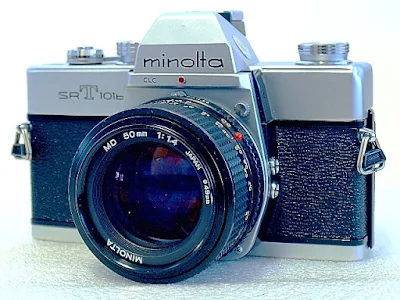
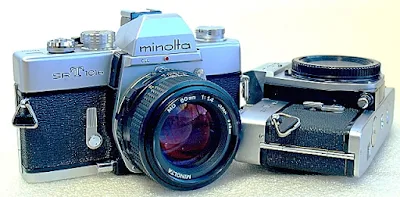


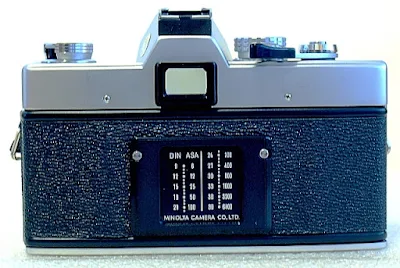
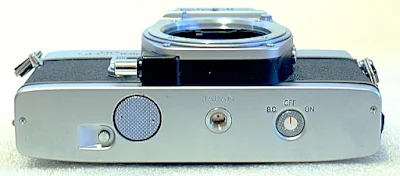
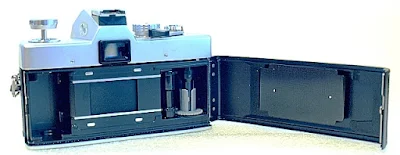
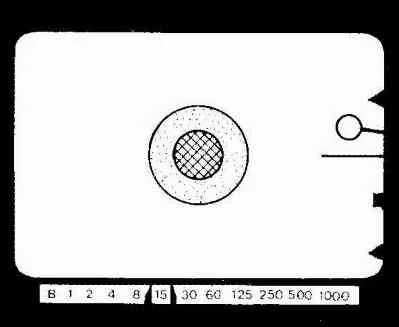










Well noted, EXCEPT that you did one mistake.
ReplyDeleteThe battery is of 3V not 1.35V and it does not work with one 1.5V button cell, but you need 2 1.5V button cell to make it to 3V total. Mine NEVER works with 1.5V, so I have to use 3V to make it work and with 3V it always works 100% flawless. And I have 4 of these cameras at home and all of them needed 3 volts, not 1.5 volts.
I have a kinky feeling that you are referring to a completely different make and model camera.
DeleteWell, to each his own.
Thanks.
в мурзилке написано, что батарея 1,35 в. Прекрасно подошла РЦ-53, наша родная, доморощенная. Две батарейки- это в Х370, Х300,500,700 Минольту
DeleteConfermo, tutte le mie dieci Minolta md funzionano con batterie a 1,35V.
ReplyDeleteGrazie
Delete